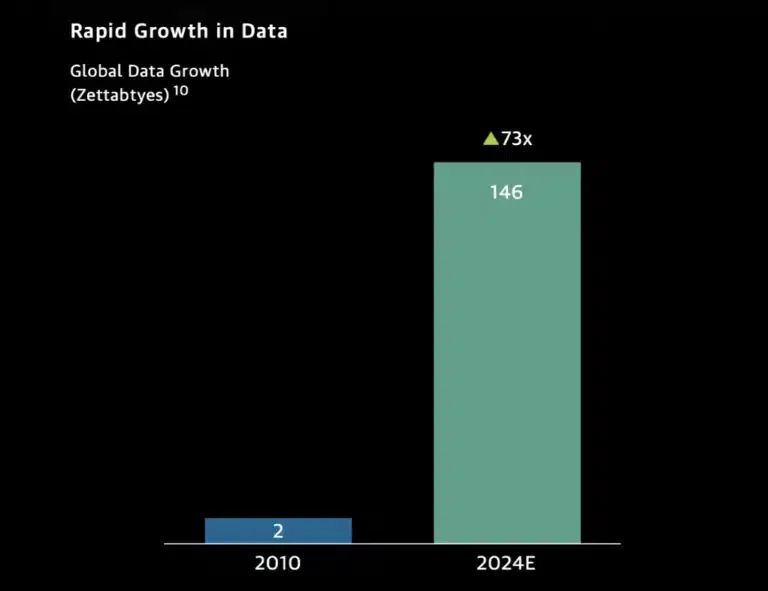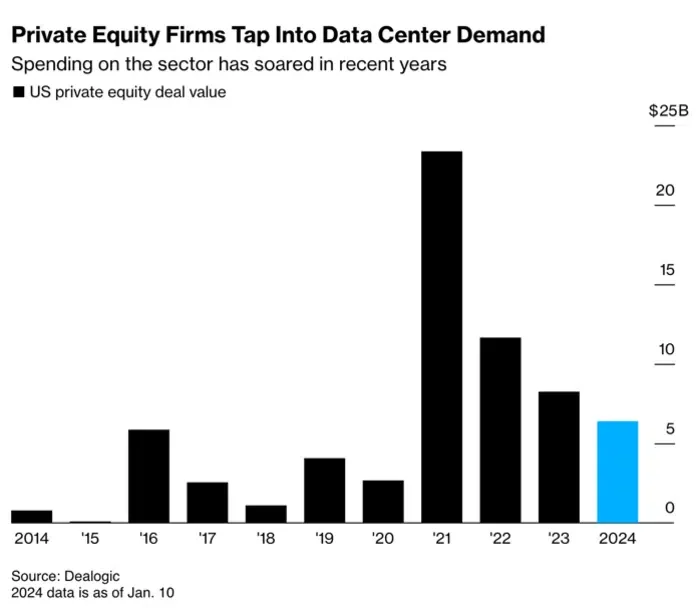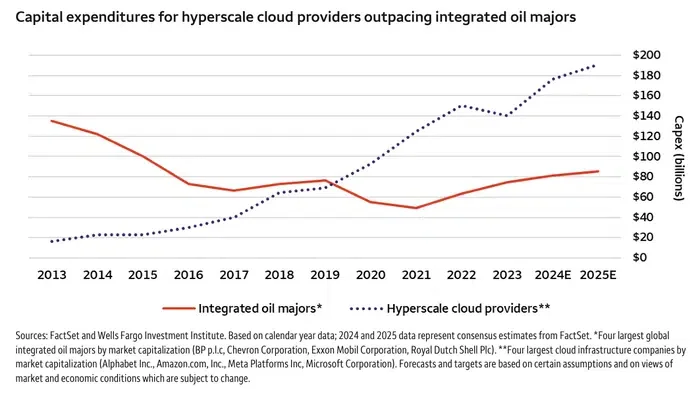Making 150% on $10 billion in three years… that kind of opportunity comes around once in a lifetime.
But for Blackstone, it wasn’t a one-and-done.
This is a story about three buildings:
- The power in them,
- The power they consume, and
- Their power over your future.
Few people know that any of these buildings exist. Even fewer know what happens inside them.
But it’s extremely important that you do.
Because like it or not, it’s going to affect your life in untold ways in the years to come.
From Printing Press to Windowless Moneymaker….
The first of these buildings lies in Chicago’s Southside.
It’s a regal historic building, with ornate exterior architecture. But there’s one peculiar feature that passersby might immediately notice…
Every one of its hundreds of windows has been covered up—from the inside.
Someone doesn’t want people to know what goes on at 350 E. Cermak.
Now its history is no mystery…
It was built a century ago to house massive mechanical printing presses for the Yellow Pages (remember those?) and the Sears Catalog (remember that?).
The value and weight of the building’s use forced its owners to construct it like a tank: It’s fireproof and capable of carrying heavy, concentrated loads on each floor.
That makes it perfect for its modern use—one that is extremely crucial to our daily lives.
Today, E. Cermak is home to ChicagoORD10, a 1.1 million sq. ft. data center.
Each floor of the data center is packed to the gills with thousands of powerful, screenless computers called “servers.”
These servers run the operations of seventy financial firms in Chicago—making ChicagoORD10 the beating heart of Chicago’s multibillion-dollar commodity markets.
But Data Centers Don’t Just Run The Stock Market
All internet-accessible information is either housed in or processed on a server sitting in a data center.
And the amount of internet-accessible information is exploding far faster than most people realize.
From 2010 to 2024, the amount of data increased by 73x.

In fact, more data has been created since 2020 than in the rest of human history combined.
A research consortium for all the major semiconductors found that if data continues to scale at the current rate, we will run out of silicon to store it on.
That unexpectedly runaway data growth has created what alternative investment management company Blackstone is calling their “best investment ever.”
The Monster Investing Fund Betting the Farm on Data Centers
Three years ago, Blackstone started laying the groundwork for a data center empire. To jumpstart their entry into the industry, Blackstone acquired QTS for $10 billion.
When an investment fund with $1 trillion in assets under management starts to move heavy firepower in a particular direction, it’s best to pay attention.
Especially when, just three years later, that initial investment has become worth more than $25 billion.
Achieving a 150% return in three years is world-class.
They saw the future of buildings like E. Cermak—and decided to go all-in.
In 2021, Blackstone had $1 billion in data centers under development.
Three years later, it has more than $15 billion under development.
Other private equity firms have followed suit, snatching up data centers at historically high multiples just to get a piece of the action:
- EQT is planning to purchase Global Switch Holdings for $6 billion—a 20x EBITDA multiple.
- KKR and GIP bought CyrusOne in 2022 for $15 billion, a 23x multiple.
- DigitalBridge bought Switch for $11 billion in 2022, a 31x multiple.
All told, $43 billion in U.S. data center deals closed between 2021–2023—more than five times the previous three years.

At the same time, pure data center plays, like Digital Realty—which owns the E. Cermak building—and Equinix are building out their own data center real estate empires.
It’s still not enough for the big tech companies.
So, they are investing hundreds of billions in building out their own data center infrastructure.
Hyperscale at Warp Speed
Four companies—referred to as “hyperscalers”—require the bulk of cloud computing needs: Amazon, Google, Meta, and Microsoft.*
- Google has enterprise and consumer cloud services, as well as Maps, Gmail, and YouTube.
- Amazon’s AWS hosts everything from Netflix to the BBC.
- Meta and Microsoft both host their own apps, as well as offer giant cloud computing environments like Azure.
These operations are extremely profitable for the tech companies. In fact, AWS accounts for only 14% of Amazon’s revenue—but 53% of its profit.
So, they’re willing to spend nearly anything to retain that profit.
For example, Amazon has announced that it will invest $35 billion in expanding its data center presence in Virginia alone. As well as $10 billion in just two new data centers in Mississippi.
It’s going to expand server farm hubs in Oregon, Saudi Arabia, and Malaysia.
To understand just how much money will get poured into data centers:
The four hyperscalers started spending more than the oil majors on capex in 2019—and they’ve nearly doubled annual capex since then.
*Apple does not publicly report data center capex.

Together, the big four are expected to spend nearly $200 billion on data centers in 2025.
Between private equity firms, colocation companies, and hyperscalers, the overall number and sheer magnitude of data centers being built is nearly unimaginable.
- The U.S. is expected to triple its entire data center capacity in the next six years.
And the profit possible right now is incredible.
“We’re in a once-in-a-generation investment cycle for data centers.”
– Brookfield Infrastructure Partners
But Blackstone and the hyperscalers aren’t doubling down with hundreds of billions for an investment cycle.
They know that data center demand isn’t rising linearly. It’s rising exponentially.
They’re seeing that no matter how many data centers are built, it’s not enough.
In fact, the more data centers that get built—the higher demand rises.
Which has set the stage for a handful of the best investment opportunities ever seen, starting with data centers themselves.
Regards,
Marin Katusa
Contributor, Freedom Financial News




